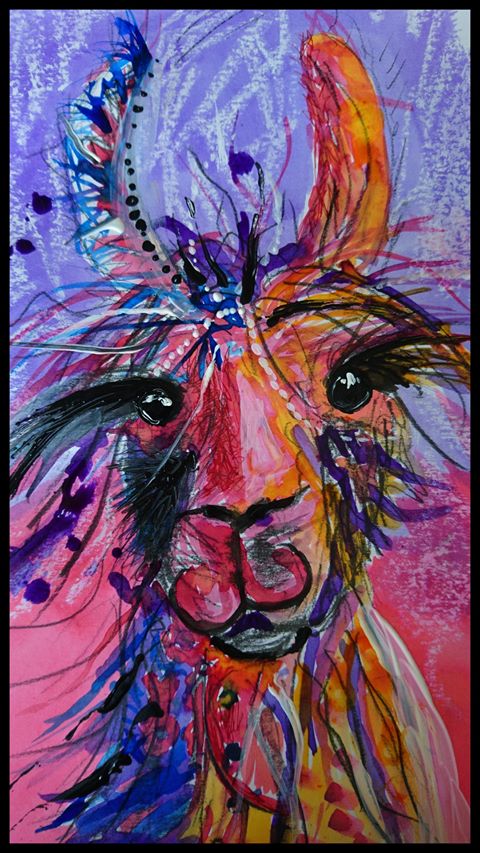Taxonomy/Evolution
Documenting Domestication: New Genetic and Archaeological Paradigms. http://www.jstor.org/stable/10.1525/j.ctt1pnvs1
Llama Herding and Settlement in Prehispanic Northern Chile: Application of an Analysis for Determining Domestication on JSTOR.
http://www.jstor.org/stable/279691
- Maturrano, D. Hoces, Y. Hu, J. C. Wheeler, M. W. Bruford, Comparing genetic diversity and demographic history in codistributed wild South American camelids Heredity
https://doi.org/10.1038/s41437-018-0120-z
Genetic Analysis Reveals the Wild Ancestors of the Llama and the Alpaca.
http://www.jstor.org/stable/3067673
Genetic diversity and conservation status of managed vicuña (Vicugna vicugna) populations in Argentina. https://www.ncbi.nlm.nih.gov/pubmed/26842726
The history of Old World camelids in the light of molecular genetics.
https://www.ncbi.nlm.nih.gov/pubmed/27048619
Molecular Characterization of the Llamas (Lama glama) Casein Cluster Genes Transcripts (CSN1S1, CSN2, CSN1S2, CSN3) and Regulatory Regions.
https://www.ncbi.nlm.nih.gov/pubmed/25923814.
Molecular Evolution of the Family Camelidae: A Mitochondrial DNA Study
http://www.jstor.org/stable/49586.
Wikipedia
https://en.wikipedia.org/wiki/Llama
Baskin, J. & Thomas, R. (2016) A review of Camelops (Mammalia, Artiodactyla, Camelidae), a giant llama from the Middle and Late Pleistocene (Irvingtonian and Rancholabrean) of North America. Historical Biology 28. https://doi.org/10.1080/08912963.2015.1020800
Bravo-Cuevas, V. M. & Jimenez-Hidalgo, E. (2015) First reported occurrence of Palaeolama mirifica (Camelidae, Lamini) from the Late Pleistocene (Rancholabrean) of Puebla, central Mexico. Boletín de la Sociedad Geológica Mexicana 67. https://doi.org/10.18268/BSGM2015v67n1a2.
Buckley, M., Lawless, C. & Rybczynski, N. (2019) Collagen sequence analysis of fossil camels, Camelops and c.f. Paracamelus, from the Arctic and sub-Arctic of Plio-Pleistocene North America. Journal of Proteomics 194. https://doi.org/10.1016/j.jprot.2018.11.014.
Cui, P., J I, R. & Ding, F. (2007) A complete mitochondrial genome sequence of the wild two-humped camel (Camelus bactrianus ferus): an evolutionary history of camelidae. BMC Genomics 8. https://doi.org/10.1186/1471-2164-8-241
Cs, S. (2009) Os Camelidae Lamini (Mammalia, Artiodactyla) do Pleistoceno da América do Sul : aspectos taxonômicos e filogenéticos. (PhD thesis, unpubl.), Universidade Federal do Rio Grande do Sul. Instituto de Geociências, Programa de Pos-Graduacao en Geociencias, Porto Alegre, Brasil. https://www.lume.ufrgs.br/handle/10183/49733.
Ferigolo, J., Ribeiro, A. M. & Guerra, C. C. (2007) Contribution to the knowledge of Hemiauchenia paradoxa (Artiodactyla, Camelidae) from the Pleistocene of southern Brazil. Revista brasileira de paleontología 10. https://doi.org/10.4072/rbp.2007.1.04
Harrison, J. A. (1985) Giant Camels from the Cenozoic of North America. Smithsonian Contributions to Paleobiology 57. Allali, K., Achaaban, M. & Ouassat, M. (2017) Anatomy of the dromedary head skeleton revisited. J Morphol Sci 34. https://doi.org/10.4322/jms.100916.
Heintman, P. D., Zazula, G. D. & Cahill, J. A. (2015) Genomic Data from Extinct North American Camelops Revise Camel Evolutionary History. Molecular Biology and Evolution 32. https://doi.org/10.1093/molbev/msv128.
Scherer, C. S. , Allali, K., Achaaban, M. & Ouassat, M. (2017) Anatomy of the dromedary head skeleton revisited. J Morphol Sci 34. https://doi.org/10.4322/jms.100916.
Scherer, C. S. (2013) The Camelidae (Mammalia, Artiodactyla) from the Quaternary of South America: Cladistic and Biogeographic Hypotheses. Journal of Mammalian Evolution 20. https://doi.org/10.1007/s10914-012-9203-4.
Webb, S. D. & Meachen J., (2004). On the Origin of Lamine Camelidae Including a new Genus from the Late Miocene of the High Plains. Bulletin of Carnegie Museum of Natural History 36:349-362. https://doi.org/10.2992/0145-9058(2004)36[349:OTOOLC]2.0.CO;2.
Verzi, D., Deschamps, C. & Tonni, E. P. (2004) Biostratigraphic and palaeoclimatic meaning of the Middle Pleistocene South American rodent Ctenomys kraglievichi (Caviomorpha, Octodontidae). Palaeogeography, Palaeoclimatology, Palaeoecology 212. https://doi.org/10.1016/S0031-0182(04)00328-1.
Woodburne, M. O. (2004) Late Cretaceous and Cenozoic Mammals of North America: Biostratigraphy and Geochronology. Columbia, Columbia University Press. https://doi.org/10.7312/wood13040.
© Copyright Hill View Llamas, Frodsham
